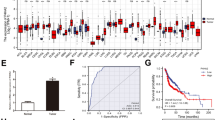Abstract
The present study examined whether X-ray- and CDDP-sensitivities depend on p53 gene status in human squamous cell carcinoma of the head and neck (SAS cells) showing dominant negative nature of mutant p53 protein. SAS cells were transfected with a vector carrying a mutant p53 gene (SAS/Trp248 cells) or neomycin resistant gene control vector (SAS/neo cells). Sensitivities of the transfected cells to X-ray or CDDP were measured with colony formation assay. The incidence of apoptosis by X-ray or CDDP was analyzed with Hoechst staining or DNA ladder formation assay. The activation of caspase-3 was estimated as an indicator of apoptosis by the detection of fragmentation of caspase-3 or poly (ADP ribose) polymerase (PARP) with Western blot. SAS/Trp248 cells showed X-ray- and CDDP-resistance due to the dominant negative nature of mutant p53, compared with SAS/neo cells. The incidence of DNA ladders and apoptotic bodies increased markedly in SAS/neo cells after X-ray irradiation or CDDP treatment, but increased only slightly in SAS/Trp248 cells. Fragmentation of caspase-3 and PARP was observed in SAS/neo cells, but almost no such fragmentation was observed in SAS/Trp248 cells after X-ray irradiation or CDDP treatment. The present results strongly suggest that the X-ray- and CDDP-sensitivities of human squamous cell carcinomas are p53-dependent, and that the sensitivities are tightly correlated with the induction of apoptosis through caspase-3 activation. The p53-dependent X-ray- or CDDP-sensitivity was supported by results from p53-null human lung cancer H1299 cells which were transfected with wild-type or mutant p53 gene.
Similar content being viewed by others
References
Lowe SW Cancer therapy and p53. Curr Opin Oncol 1995; 7: 547-553.
El-Deiry WS, Tokino T, Velculescu VE, et al WAF1, a potential mediator of p53 tumor suppression. Cell 1993; 75: 817-825.
Harper JW, Adami GR, Wei N, et al The p21 Cdk-interacting protein Cip1 is a potent inhibitor of G1 cyclin-dependent kinases. Cell 1993; 75: 805-816.
Bristow RG, Jang A, Peacock J, et al Mutant p53 increases radioresistance in rat embryo fibroblasts simultaneously transfected with HPV16-E7 and/or activated H-ras. Oncogene 1994; 9: 1527-1536.
Lotem J, Sachs L Regulation by bcl-2, c-myc, and p53 of susceptibility to induction of apoptosis by heat shock and cancer chemotherapy compounds in differentiation-competent and-defective myeloid leukemic cells. Cell Growth Differ 1993; 4: 41-47.
Lotem J, Sachs L Control of sensitivity to induction of apoptosis in myeloid leukemic cells by differentiation and bcl-2 dependent and independent pathways. Cell Growth Differ 1994; 5: 321-327.
McIlwrath AJ, Vasey PA, Ross GM, et al Cell cycle arrests and radiosensitivity of human tumor cell lines: Dependence on wild-type p53 for radiosensitivity. Cancer Res 1994; 54: 3718-3722.
Li R, Sutphin PD, Schwartz D, et al Mutant p53 protein expression interferes with p53-independent apoptotic pathways. Oncogene 1998; 16: 3269-3277.
Brachman DG, Beckett M, Graves D, et al p53 mutation does not correlate with radiosensitivity in 24 head and neck cancer cell lines. Cancer Res 1993; 53: 3667-3369.
Feudis PD, Debernardis D, Beccaglia P, et al CDDP-induced cytotoxicity is not influenced by p53 in nine human ovarian cancer cell lines with different p53 status. British J Cancer 1997; 76: 474-479.
Huang H, Li CY, Little JB Abrogation of p53 function by transfection of HPV16 E6 gene does not enhance resistance of human tumour cells to ionizing radiation. Int J Radiat Biol 1996; 70: 151-160.
Ishizaki K, Mimaki S, Nishizawa K Genetic instability of p53-deficient mouse cells. Leukemia 1997; 3: 334-336.
Ota I, Ohnishi K, Takahashi A, et al Transfection with mutant p53 gene inhibits heat-induced apoptosis in a head and neck cell line of human squamous cell carcinoma. Int J Radiat Oncol Biol Phys 2000; 47: 495-501.
Jia LQ, Osada M, Ishioka C, et al Screening the p53 status of human cell lines using a yeast functional assay. Mol Carcinog 1997; 19: 243-253.
Kern SE, Pietenpol JA, Thiagalingam S, et al Oncogenic forms of p53 inhibit p53-regulated gene expression. Science 1992; 256: 827-830.
Stennicke HR, Salvesen GS Properties of the caspases. Biochem Biophys Acta 1998; 1387: 17-31.
Kaufmann SH, Desnoyers S, Ottaviano Y, et al Specific proteolytic cleavage of poly(ADP-ribose) polymerase: An early marker of chemotherapy-induced apoptosis. Cancer Res 1993; 53: 3976-3985.
Ohnishi K, Wang X, Takahashi A, et al Contribution of protein kinase C to p53 dependentWAF1 induction pathway after heat treatment in human glioblastoma cell lines. Exp Cell Res 1998; 238: 399-406.
Halevy O, Michalovitz D, Oren M Different tumor-derived p53 mutants exhibit distinct biological activities. Science 1990; 250: 113-116.
Rosse T, Olivier R, Monney L, et al Bcl-2 prolongs cell survival after Bax-induced release of cytochrome c. Nature 1998; 391: 496-499.
Fujita N, Tsuruo T Involvement of Bcl-2 cleavage in the acceleration of VP-16-induced U937 cell apoptosis. Biochem Biophys Res Commun 1998; 246: 484-488.
Zhan Q, Fan S, Bae I, et al Induction of bax by genotoxic stress in human cells correlates with normal p53 status and apoptosis. Oncogene 1994; 9: 3743-3751.
Miyashita T, Krajewski S, Krajewska M, et al Tumor suppressor p53 is a regulator of bcl-2 and bax gene expression in vitro and in vivo. Oncogene 1994; 9: 1799-1805.
Roth JA, Nguyen D, Lawrence DD, et al Retrovirus-mediated wild-type p53 gene transfer to tumors of patients with lung cancer. Nature Med 1996; 2: 985-991.
Author information
Authors and Affiliations
Rights and permissions
About this article
Cite this article
Ohnishi, K., Ota, I., Takahashi, A. et al. Transfection of mutant p53 gene depresses X-ray- or CDDP-induced apoptosis in a human squamous cell carcinoma of the head and neck. Apoptosis 7, 367–372 (2002). https://doi.org/10.1023/A:1016131614856
Issue Date:
DOI: https://doi.org/10.1023/A:1016131614856




